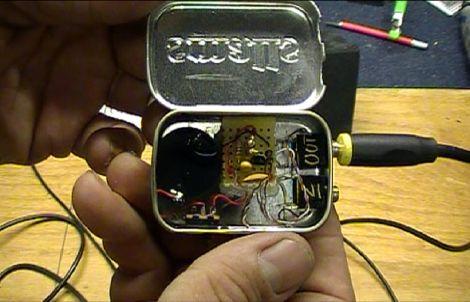
Here’s a no-PCB Arduino that doesn’t obscure the DIP footprint of the AVR chip. It’s built on an ATmega88 chip, and includes a programming header, reset button, a couple of filtering caps, and an LED. This is modeled after the Lilypad hardware, and fits nicely on top of the plastic case of the microcontroller, allowing it to be used in a breadboard or DIP socket. You can see a walk through of the components in the clip after the break.
We don’t really need most of the components on top of the chip (especially the status LED on the SCK line), but there are several things that we like about this. First off, the programming header is extremely nice. We could see this coming in handy for prototyping where you don’t want to add a header to your final design. Just use a chip socket, and this chip while you’re developing firmware. Once everything is dialed in, program a naked chip and swap the two. The same goes for the reset button, which is nice when working on firmware but may not be necessary in your final design.
This is quite an old project, and we’ve actually seen a successor to it. This is Rev. 2 and we looked in on Rev. 7 back in March. That one is a full Arduino, but the circuit board has no substrate.
Continue reading “Dead-bug Arduino Is Still Breadboard Ready”















